Media | Articles
Sometimes Overlooked, Dodge’s 1966-67 Charger Charts Its Own Path
Ask enthusiasts the first thing they think of when they hear “Dodge Charger,” and they’re bound to mention Hellcats or reference the 1968-70 second-generation cars, which were popular in their own right before securing everlasting fame through starring roles onscreen in Bullitt and The Dukes of Hazzard. Chances are slim, though, that the first-generation Charger would come up among any but the most die-hard Mopar fans.
It might be well-hidden in the shadows of the high-flying second-generation and 700+ horse modern siblings, but when properly equipped, the first Charger was able to hold its own on street while offering up design elements and an interior that set it apart from other intermediate-sized muscle of the period. Today, the first-gen car is more affordable and more rare than its more popular ’68-70 successor, and provides a chance to differentiate from what’s become the Charger mainstream.
In the early ’60s, Dodge was looking to liven up its image, and to showcase its upcoming 426-cubic inch Hemi engine. The 1964 Dodge Hemi Charger concept was born, a two-seat roadster built off an existing two-door Polara. Unfortunately, the Hemi suffered from some early production issues, so the car didn’t get one in time for its national tour. It did, however, succeed in creating some buzz for the brand.
That same year, Plymouth rolled out its Barracuda, which was immediately overshadowed by Ford’s launch of the Mustang. Eager to get in on the game, Dodge sought a smaller, youth-oriented model of its own based on the Barracuda, but parent Chrysler Corporation said no—it’d have to make do with an intermediate-sized model instead.
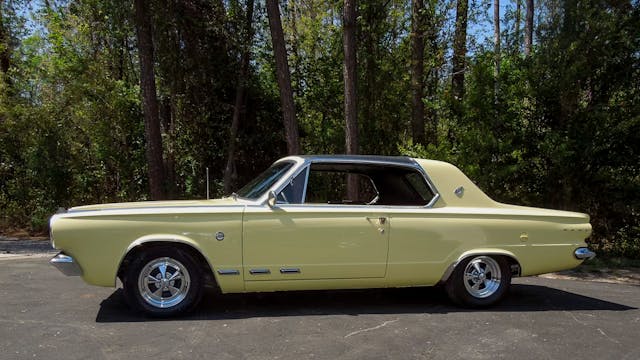
While plans for that car began to get underway, the Charger nameplate first graced a production model in 1965 as a sporty trim level on the “senior compact” Dart. Only 480 Dart Chargers were made, all in yellow (although there is some evidence that one silver car exists), all sporting 273-cubic inch V-8s. In an era when cars received constant visual updates, the Dart’s 1963 redesign was already showing its age, so Dodge teased the upcoming model’s new look with the Charger II concept ahead of the production car’s unveiling.
Marketplace
Buy and sell classics with confidence
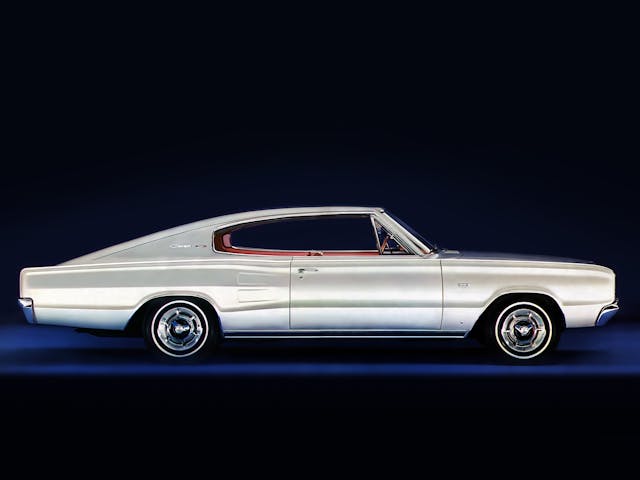
Come 1966, Dodge finally got its sporty coupe. The new Charger was based on Coronet underpinnings and shared much of its front bodywork (along with suspension and brakes) with that model, but was set apart by a striking, large fastback, hidden headlights, and a clean full-width taillight. The swept roofline was distinctive and eye-catching among the more mundane three-box intermediate-size designs of the time, though its looks wouldn’t be considered as sleek, or ultimately as brand-defining, as its 1968 successor.
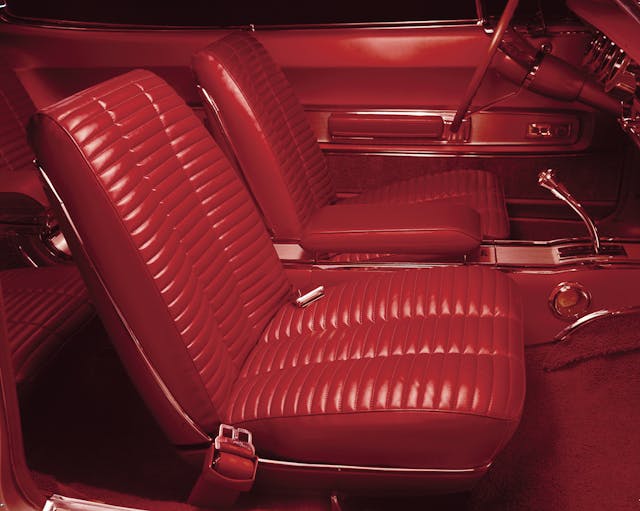
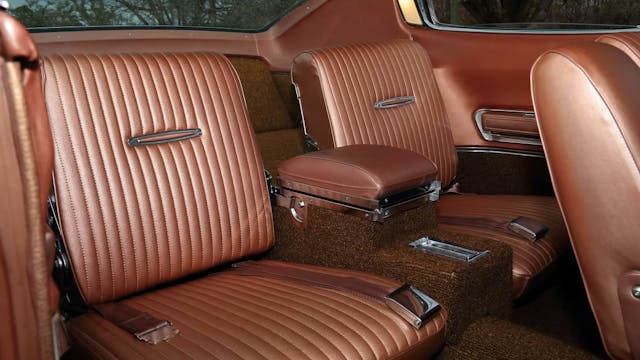
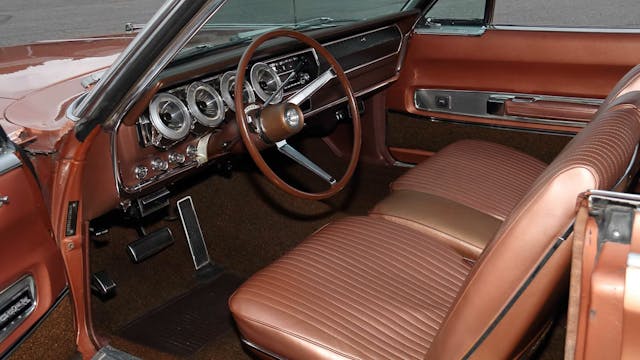
Beneath that roof, Dodge went upscale, sporty, and practical. The Charger’s instruments—four large, blue-backlit gauges—were an exciting change from single-sweep speedometer found in the Coronet. It utilized bucket seats front and rear, along with a center console that stretched the length of the seating area. (The console size would be reduced the following year to help with ingress and egress). Rear buckets weren’t a regular occurrence back then, and they helped separate the Charger from more pedestrian intermediate coupe offerings. Like other fastbacks that were emerging around the same time, those back seats and rear console could fold down, creating a substantial cargo area over seven feet long—Dodge even called it a sports wagon in its advertisements.
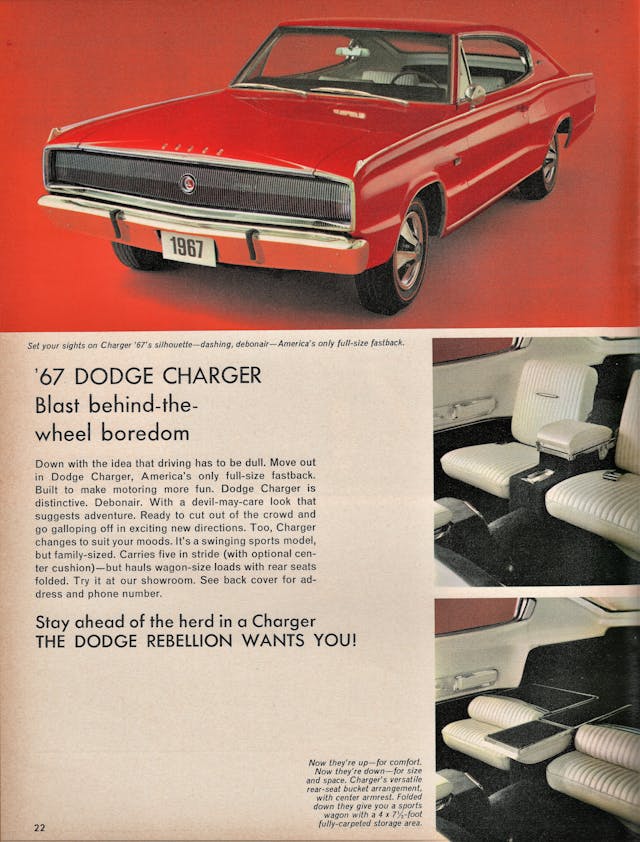
Under the hood, Dodge offered a spread of V-8s: an entry-level 318-cubic inch mill, a 361, 383, and the range-topping 425-horse 426-cubic inch Hemi. All but the 318 (which came with a three-on-the-tree if you wanted a manual) could be had with a console-mounted four-speed manual; the Torqueflite three-speed auto was available across the whole lineup. In 1967, an additional 383 replaced the 361 and a 440-cubic inch engine was added.
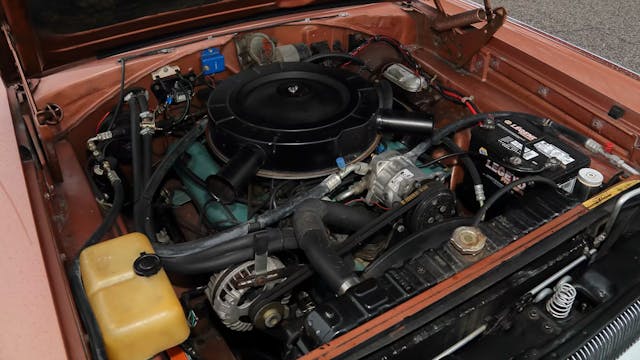
Car and Driver was nonplussed with a 383-equipped Charger they reviewed in their February, 1966 issue, stating, “[t]he Charger is a good automobile, make no mistake about it, but we had somehow expected more when we first got behind the wheel. Maybe it’s because the sporty styling conjured up the fantasy of all sorts of exotic engineering underneath.”
The review has a point—the Charger was effectively a dressed-up Coronet, but, at least on paper, the strategy wasn’t all that different from Ford’s formula for the Mustang, and everyone knew how that worked out. On paper and in execution can be two very different things, however, and like Car and Driver, the public showed only a modest interest in the Charger. Only 37,344 units moved in 1966 and a mere 15,788 sold in 1967.
Dodge was quick to cure this sales flop, though—the 1968 redesign was an instant hit, sending sales flying to 96,100 units. Along with the more attractive—if less daring—bodywork, Dodge simplified things, too, ditching the rear buckets and their folding mechanism, carpeted storage area, and other interior characteristics intended to frame the Charger as a more premium offering.

The public’s muted response to the first-gen Charger back then is reflected in its values as a collector car now, especially relative to the second-gen car. A ’67 with the vaunted 426 Hemi comes in at $119,000 for a #2 (Excellent) condition example; a ’68 in the same condition with the same engine is $39k more. For less powerful engines, the delta is less drastic—there’s a little more than an $8k difference between the ’67 and ’68 high-performance 383s, for instance—but it is present across the board. All first-gen Chargers experienced a valuation bump during the pandemic, but they have stayed flat since.

Despite playing second fiddle, our data show that first-gen Chargers are seeing an uptick of among Gen X and Gen Z, and quote count overall is steady. Value trends and quote count paint the picture of a collector car with a limited but committed audience.
Given modern standards, no potential buyer would be disappointed by the lack of performance differentiation between the first-gen Charger and the more plain Coronet—people buy this car because they appreciate the experience it provides. Dodge took a chance with this initial Charger, and although they ultimately had to make corrections to ensure the its viability, the ’66-’67 model remains an intriguing and thoughtfully created classic. The handsome if imperfectly proportioned design either appeals or it doesn’t; and along with its more upscale and specialized interior, it’s very much a different kind of car than subsequent models. If you’re looking for a Mopar model with a little more flair, or a Charger that marches to a different tune, the first-gen Charger might be right for you.
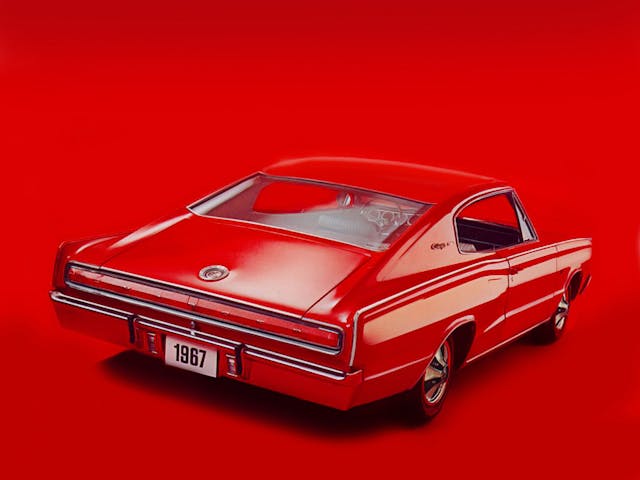
***
Check out the Hagerty Media homepage so you don’t miss a single story, or better yet, bookmark it. To get our best stories delivered right to your inbox, subscribe to our newsletters.
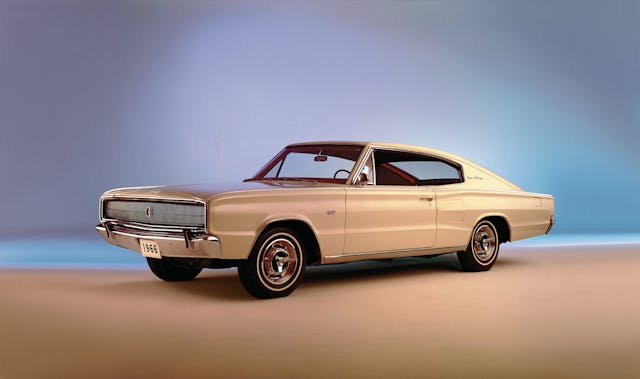










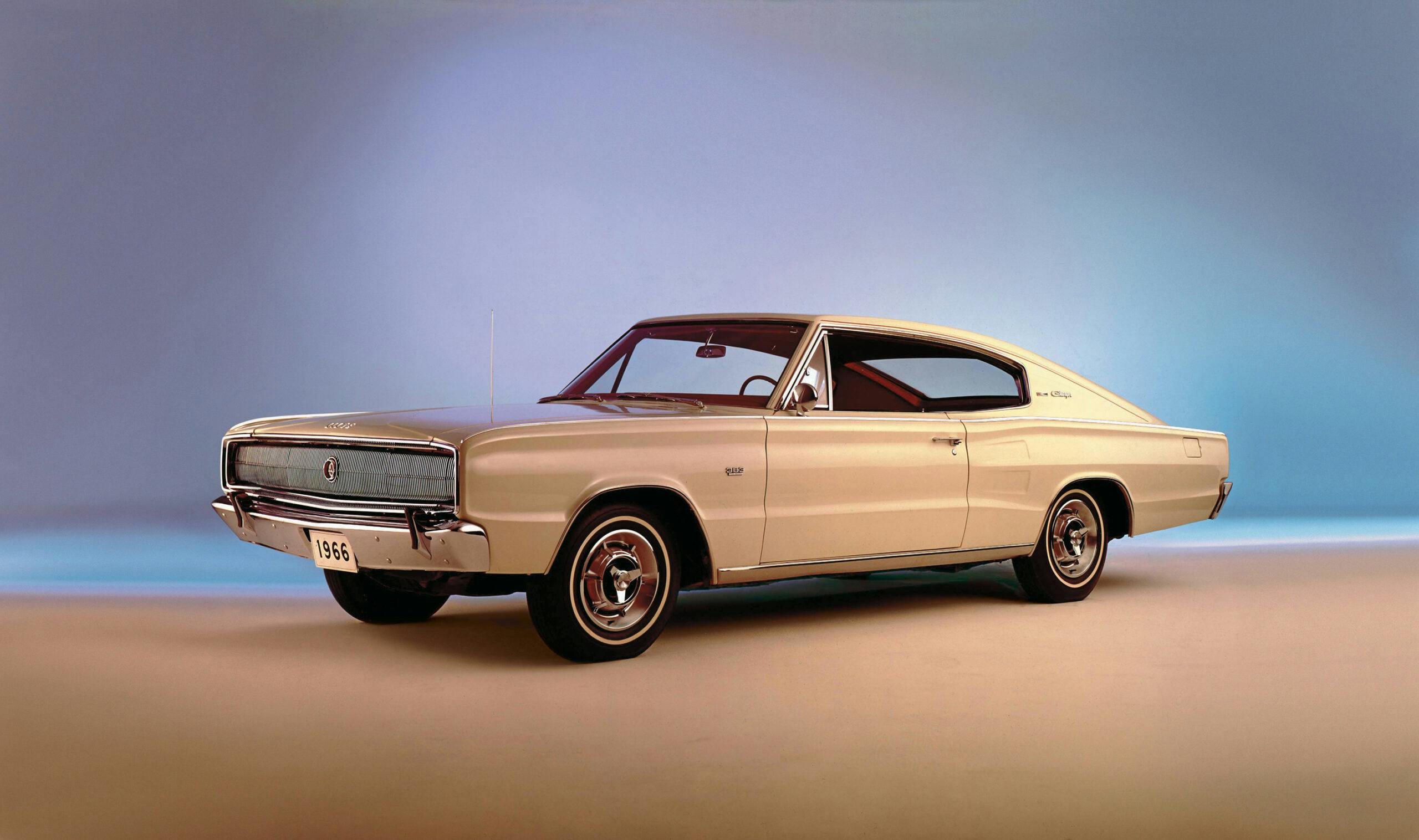
They’re attractive, in a way. However saying the formula is much the same as the Mustang is a bit of a stretch.( the 68-69 Torino would be a better example if you must ) All of the Mustangs sheet metal was unique, these Chargers look like fastback versions of the Coronet including extending back from the shared front quarters. Those character lines continue much the same on both models. So it looks a bit too fussy and chunky for an intermediate. Like these years were a step between the, questionable shall we say, styling of those preceding and the cleaner of those that came after, which I guess they are. As such I would have to say, if you just have to do a resto-mod, these are a real good candidate. Find a an acceptable 67 with a 318 that needs some work and go to town, streamline it a bit. Those faux rear quarter intakes could be deleted along with… Just leave the nice examples well enough alone and give me a ‘sporty’ example of a Coronet convertible instead.
Better lines than a Marlin, but that’s not saying much.
Charger, Marlin and first-year Barracuda conspired to make the Mustang fastback look nearly perfect.
So right.
I remember seeing my first 67 Charger. I was completely enamored with it. Red, black interior and a Hemi 4 speed. I still want one today just like it…..
I also thought the ’67 Charger was very cool looking when it came out.
Seeing this photo more than 50 years later, it’s a disappointment. It looks kind of odd from the front–with the eyes missing. Too busy from the side. And somewhat boring all around. I wouldn’t be buying this, and I’m not sure I’d even be photographing it at a car show. (I’ve never seen one at a car show, and I went to lots of them in the ’90s–from one I have probably at least several thousand prints–and the ’00s.)
I have always liked the first generation Charger, and IMO its interior was far nicer than any of those on later models until the just-discontinued version. Those electroluminescent gauges were really cool.
A little box on top of a big box. 1969 and 1970 models are better looking.
Arrgghhh. Those rear “bucket” seats were nothing but a split bench. A move in the right direction though, even if the chassis was only made for straight lines. FWIW the second generation Coronet was every bit as good when equipped with a 440.
I’m glad you brought these cars to light.i had forgotten how beautiful they truly were.l really loved the tail lights,& it ‘s profile, l would love to have one now, thanks
The full length console and buckets are space age cool. These Chargers remind me of factory show cars of the period. A bold look to catch the public’s eye. Other examples incude the 61 T-Bird, 71 Riviera, and 66 Tornado.
While risky, it leaves us with some very interesting vehicles.
The 1st Gen Chargers were elegant sports cars with lots of bright metal outside and inside, electroluminescent dash, flow-through console, fold down rear buckets, and a fold down trunk hatch for everything from skis to clubs fit nicely inside. Rotating hidden headlights just topped it off!
We referred the Chargers as “Go Machines”… My ’67 Mustang Convertible was a beauty..an excellent road car. However, a real rust bucket within 3 years!! A real shame…
I do like these cars. I agree that this has a more Torino like look than Mustang. I feel the new one fails to capture the front end of these cars.
Gary- Do you mean the new ones (2025) or the most current? The latest production have always seemed like they played pick a name, threw a 68/ Nike swoop on and called them Chargers. The up and coming 2 doors ( 4 door available ) are what they should have done when they brought back the badge. From what I’ve seen , much more in the spirit of the classic Charger. Almost like they updated and then mixed the Charger and Challenger. Seems like they got their S together and got it right. Maybe being acquired by the Fiat Group, now…wasn’t such a bad thing.
Agreed. The 4 door was never in the spirit of the original Charger and never should’ve worn that nameplate, all it was, was a Magnum sedan,,,,ugly.
I love the Early Chargers, I just do!!
I like these first Chargers. With more shallow pockets than GM or FORD Chrysler took a middle of the road approach. The Charger could be a loaded personal luxury coupe or a medium to full blown super car with the 383 or Hemi. The interiors were great. I was 13 when I saw these first and was hooked. Admirable effort IMO on Chryslers part to produce it as an intermediate and not canibalize Plymouth/Barracuda as they did with the early Darts.
Chargers came first…Torino’s look like Chargers not the other way around.